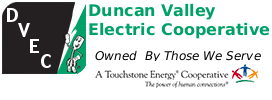 Growing up I was taught the importance of reporting on a regular basis. Good or bad, my parents would expect a report for many things, such as, "How was the game? What did you do today? How did you do on your test?" There wasn't even an exemption on Sunday with the lingering, enduring question of, "What did you learn today in Sunday School?"
Growing up I was taught the importance of reporting on a regular basis. Good or bad, my parents would expect a report for many things, such as, "How was the game? What did you do today? How did you do on your test?" There wasn't even an exemption on Sunday with the lingering, enduring question of, "What did you learn today in Sunday School?"
We regularly asked these same questions of our children. Sometimes it was simply a way to engage them in conversation, but it was also to prepare them for life and the persistent process of reporting on our works.
Since 1999, I have provided regular reports to the board of directors, numerous government agencies, insurance companies, many of our cooperative partners, and to you the members.
As my official duties as CEO come to a close, I would like to give a final report on work we've accomplished during my tenure as CEO for the last nine years.
When I took over as CEO, I had a wonderful legacy of prior CEO's who worked hard to fulfill the cooperative's mission of providing safe, reliable, and affordable energy services. But the work is never done and as our distribution system continues to grow and as political demands change, we face new challenges.
One of those first challenges was the need to increase power delivery capacity and reliability for our members. We started by constructing our Sweetwater substation that tied our north and south distributions systems together. Then working with Arizona G&T, our cooperative power provider, we developed plans and jointly installed new transformers at our Greenlee and Romney substations increasing both capacity to meet our members' needs and enhancing our reliability.
In 2015 we implemented a pole testing program to identify poles that were susceptible to failure. Our ongoing goal is to test our full system every 10-12 years. So far we have tested 64% of our system and replaced 97 failing poles. Identifying these poles reduces outages and costs since we can replace them during normal working hours and not afterhours during storms and adverse conditions.
In 2016 after an evaluation on major construction items and maintenance costs, we switched to using LED security lights, which have a longer useful life and continue to work in the event of a photo cell failure. While the initial cost of the lights were higher, the cooperative saves money by reducing replacement and maintenance costs. In 2018, another evaluation worked in our favor to start using composite cross arms instead of wood. The composite material lasts longer than wood and is not susceptible to woodpecker damage again saving the cooperative money in the cost of replacements and maintenance.
In 2017, facing regulatory pressure to increase renewable energy in our power supply portfolio, we worked with the other cooperatives in the state to jointly build a utility class photo voltaic system which delivered power at a cost less than half of what similar projects were demanding. Participation in this project helped us exceed the state standards for renewable energy while still delivering affordable power to our members.
With an aging service truck fleet, we replaced our older bucket in 2017 and in 2019 added a bucket truck to our fleet. In addition to working more efficiently with two bucket trucks, these new trucks give us greater reach above the ground, making it safer for our line crews by reducing the number of poles we climb. This greater reach has also eliminated the expense of contracting outside tree trimming services.
As a way to defer construction expenses, in 2019 we took out a $1 million 25 year loan. Instead of using current funds to pay for system upgrades, we can use these loan funds to defer those costs over the useful life of the new construction. This was the first long term loan used by the cooperative since 1977.
In 2022 at my urging, Arizona's cooperatives introduced legislation to change the statutes governing the Arizona Corporation Commission's monetary assessments of cooperatives. Cooperative members pay these assessments through each cooperatives' rate structures. These assessments were applied to both distribution and generation cooperatives, meaning that cooperative members were paying a double assessment for their energy, once to their local cooperative and again to the generation cooperative. We worked with the Arizona cooperatives to lobby the legislature, and in rare fashion the bill passed the house with a 59-0 vote and the senate with a 27-0 vote, upon which the governor promptly signed a bill that will save cooperative members throughout Arizona over $200,000 per year.
If you have been reading carefully, you will have noticed that these accomplishments were the result of what "we" accomplished together. Whether it was the staff and employees here at Duncan Valley or whether it was our collaborative work with other cooperatives, I have been blessed to be on a great team of dedicated individuals who value the importance of cooperative principles, who esteem the common good above individual gain. I hope my service to Duncan Valley is reflected in those sentiments.
- CEO, Steve Lunt
